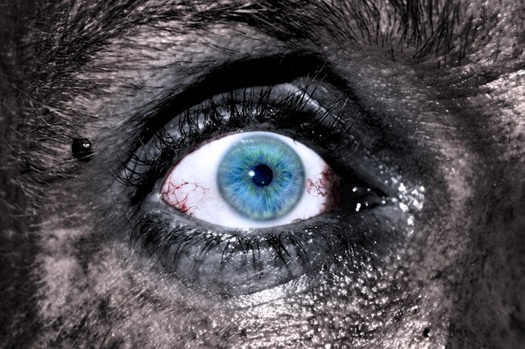Evil Eye Myth: Truth Behind Nazar in Religions

Evil Eye Myth: The Truth Behind Nazar in Various Religions
You’ve probably seen the iconic blue evil eye amulet dangling on a necklace or heard someone whisper about “nazr e bad” after a compliment. The evil eye meaning—a curse cast by a jealous glance—is a belief spanning cultures and religions, from Islam’s nazr e bad ki dua to Greek evil eye protection charms. But is the evil eye a real threat, or just a cultural myth? In this post, we’ll debunk misconceptions about the evil eye across religions, trace its origins, and explore which religions believe in nazar. By the end, you’ll know how to approach this ancient belief with clarity and confidence.
The Origins of the Evil Eye Myth
Where Does the Concept of Nazar Come From?
Where does the concept of nazar come from? The evil eye dates back over 5,000 years, appearing in Mesopotamian clay tablets and ancient Egyptian texts, per a 2023 UCLA anthropology study. It spread through Mediterranean cultures, from Greece’s “mati” to Islam’s “nazr e bad”, meaning “evil glance” in Urdu. By the Middle Ages, it was a global phenomenon, tied to envy and spiritual harm. In 2025, evil eye jewelry like evil eye necklaces and evil eye bracelets remains a trendy talisman worldwide.
Why the Myth Endures
The evil eye’s appeal lies in its universal fear of jealousy. Across cultures, from Turkish evil eye beads to Italian evil eye charms, people seek evil eye protection to ward off bad luck. Social media amplifies this, with #EvilEye posts on X showcasing evil eye tattoos and evil eye earrings, blending tradition with modern aesthetics.
Myth 1: The Evil Eye Is Universally Bad
Is the Evil Eye Good or Bad?
Is the evil eye good or bad? The myth paints it as purely harmful, but it’s not so simple. In Islam, nazr e bad is a spiritual harm countered by nazr e bad ki dua (e.g., reciting Surah Al-Falaq), per Islamic scholar Ibn Hajar. In Hinduism, what does Hinduism say about nazar? It’s seen as a negative energy, often warded off with black threads or rituals, per a 2022 Banaras Hindu University study. Yet, some cultures view the evil eye as a neutral force, harnessed for protection via evil eye amulets.
Cultural Variations
How many cultures believe in the evil eye? Over 40% of global cultures, from Middle Eastern to Latin American, per UNESCO. Each interprets it differently—Greek evil eye color meaning emphasizes blue for protection, while red evil eye bracelets in India symbolize strength.
Myth 2: All Religions Endorse the Evil Eye

Which Religions Believe in Nazar?
Which religions believe in nazar? Islam acknowledges nazr e bad, with is there any concept of nazar in Islam answered by hadiths warning of envy’s harm (Sahih Muslim). Hinduism links it to “drishti,” countered by rituals, per Vedic texts. Judaism’s what is the evil eye in Judaism refers to “ayin hara,” addressed in Talmudic teachings. Do Christians believe in the evil eye? Not explicitly—what does the Bible say about nazar? It’s absent, though some Mediterranean Christians use charms. Is nazar in Sikhism? Sikhism focuses on divine protection, not nazar, per Guru Granth Sahib.
Exceptions and Nuances
Buddhism and Jainism rarely mention the evil eye, prioritizing karma over external curses. The myth that all faiths embrace nazar ignores these distinctions, per a 2024 Oxford Religious Studies review.
Myth 3: The Evil Eye Is a Literal Curse
Is the Concept of Nazar Real?
Is the concept of nazar real? Scientifically, no—there’s no evidence a glance causes harm, per a 2023 NIH study on placebo effects. But psychologically, belief in the evil eye can amplify stress, creating a self-fulfilling cycle. In Islam, what does “nazr e bad” mean in Islam? It’s a spiritual harm, not a physical one, countered by faith-based practices like ruqyah (healing prayers).
Symbolic Power
The evil eye’s true impact is symbolic, representing fear of envy. Evil eye jewelry meaning—like evil eye pendants or evil eye rings—lies in cultural reassurance, not magic, per anthropologists at Stanford.
Practical Tips for Navigating Evil Eye Beliefs
Protection Without Superstition
- Use cultural practices: Try Islamic nazr e bad ki dua or Hindu black dot rituals if they resonate, but focus on intent, not fear.
- Mindful compliments: In many cultures, saying “Masha’Allah” or “God bless” prevents nazar, per Middle Eastern traditions.
- Explore symbols: Wear evil eye protection jewelry like evil eye bracelets for cultural connection, not paranoia.
Avoiding Missteps
Is Turkish evil eye haram? Most Islamic scholars say no—it’s a cultural, not religious, symbol, per Al-Azhar University. How do I know if I have nazar? Look for stress or coincidence, not mystical signs—consult a doctor for persistent issues.
Conclusion
The evil eye meaning spans religions, from Islam’s nazr e bad to Hinduism’s drishti, but the myth of it as a universal curse oversimplifies its role. Rooted in ancient fears of envy, it’s less about literal harm and more about cultural storytelling. Whether you wear a Turkish evil eye or recite nazr e bad ki dua, approach it with understanding, not fear. Curious about other spiritual myths? Join OmniMyths—share your thoughts below and subscribe for more truth-unraveling content!
Frequently Asked Questions
Q: Is the evil eye good or bad?
A: The evil eye is considered harmful in most cultures, symbolizing jealousy’s negative energy. However, protective symbols like evil eye amulets are seen as positive, per UCLA anthropology studies.
Q: Which religions believe in nazar?
A: Islam (nazr e bad), Hinduism (drishti), and Judaism (ayin hara) acknowledge the evil eye. Sikhism and Buddhism rarely do, focusing on divine protection or karma, per Oxford research.
Q: What does Hinduism say about nazar?
A: Hinduism views nazar as “drishti,” a negative energy from envy, countered by black threads or rituals, per Banaras Hindu University. It’s cultural, not doctrinal.
Q: Is there any concept of nazar in Islam?
A: Yes, nazr e bad is recognized as harm from envy, with nazr e bad ki dua like Surah Al-Falaq recommended for protection, per Islamic hadiths.
Q: How many cultures believe in the evil eye?
A: Over 40% of global cultures, including Mediterranean, Middle Eastern, and South Asian, believe in the evil eye, per UNESCO cultural studies.
Q: What is the difference between the evil eye and the nazar?
A: The terms are interchangeable, but “evil eye” is global, while nazar (or nazr e bad) is specific to Islamic and South Asian contexts, per Stanford anthropology.